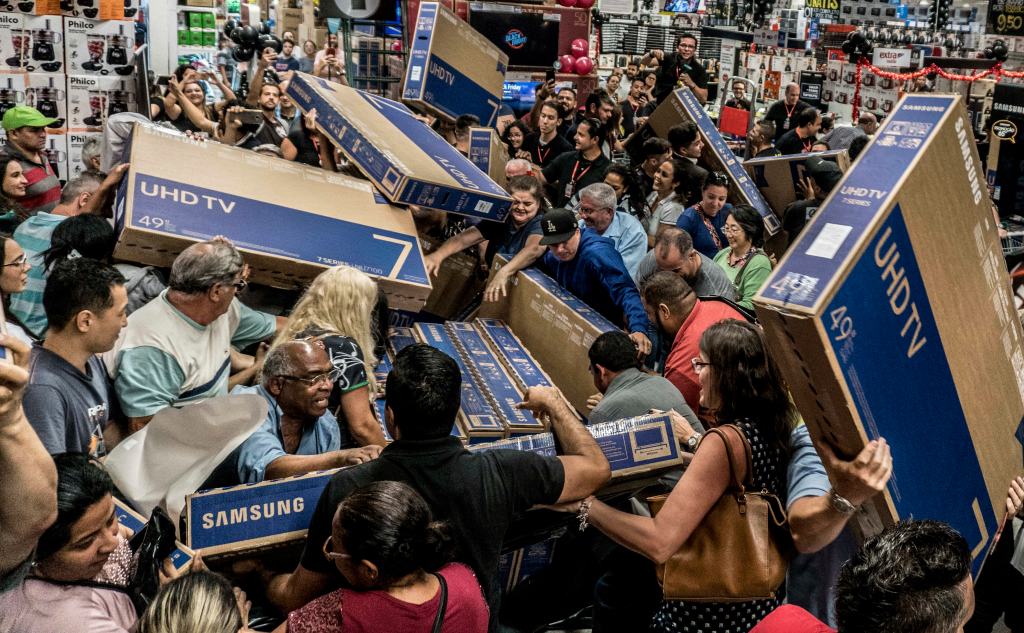For those of us living in the United States, we find ourselves facing the beginning of the holiday season. And that also means Black Friday for retailers. That used to mean the day after Thanksgiving we would all take our overstuffed bellies down to the local mall to gorge ourselves on great shopping deals. Officially kicking off our holiday shopping adventures. With the rise of online shopping, we started having Cyber-Monday when we would all go back to work and take advantage of our companies’ high-speed internet to do our eCommerce shopping. And of course today we have access to everything via our mobile phones and Black Friday is now Black Friday Week…pretty soon it will be Black Friday Month. But things changing in other ways as well. Consumers are becoming savvier in how they shop, how they take advantage of what appears to be endless deals and most importantly are becoming more conscious about the entire shopping experience.
There is a great piece in the Wall Street Journal that highlights some of the nuances when it comes to retailers’ target demographics – click here. The findings from the piece are that shoppers still want to come into stores, they are very smart about scouring the internet and social media for deals and a growing population is becoming more aware of the impact their shopping has on our planet. This last point may be the most important driver for many Black Fridays to come. Couple this with another recent story coming from the United Nations, warning that as a planet we are woefully behind when it comes to addressing our climate change issues – click here.

Savvy retailers need to rethink how they approach this season and prepare to make long term changes.
- Online might be more convenient, but the experience still matters. We all know that eCommerce has become an integral part of any retailers or consumer goods companies’ strategy for reaching the consumer. While the percentage of retail that is done online has not hit double digits yet, 9% in the United States for 2019 according to some studies, it commands a disproportional amount of our attention. And we cannot discount the fact that much of this is driven by mega-disruptor Amazon. But even Amazon has recognized the fact that to truly grow as a retailer…you need to connect with the consumer. And that means having some type of physical presence. This coming Friday I am sure we will still see a large number of people sleeping out to be the first in line for the deals, a tsunami of people inundating the local stores and countless stories on the news of the crush of humanity that descended on local stores. While this might not be the experience every consumer is looking for, it demonstrates that people are still looking to get to a store, interact in person and shop the old fashion way. Retailers and brands need to constantly think about how to create a fraction of that excitement for the rest of the shopping season and year overall, but they need to recognize that the stores can still drive traffic.
- Offer greater fulfillment options, but not always driven by “next day” or “2-hour” windows. Speaking of Amazon, in my mind, they are the biggest culprit when it comes to spreading this myth that everything has to be delivered tomorrow or within the next 120 minutes. Hey, I enjoy instant gratification as much as the next consumer, but do really need EVERYTHING I order tomorrow? No. Especially not if retailers give me a reason for holding off on getting my goods. Maybe I saw a great deal on a rug for the living room, but I am about to go out of town for a week and would rather not have that item sitting outside my house for a few days (that actually happened to my girlfriend and me). Maybe I want to order my son’s Christmas present in July but don’t want to have it sitting around the house all summer and fall. When retailers think about fulfillment they need to think in terms other than simply next day and 2-hour. How about fulfillment that has the smallest environmental footprint? Flexible fulfillment that meets the consumers’ location needs – going to be at grandma’s for Christmas, maybe have the items fulfilled from a distribution center (DC) closer to her, maybe schedule a pick up from that DC once you pick up your rental car from Hertz so you eliminate the need to dispatch a delivery truck. Flexible fulfillment needs to go beyond what Amazon is force-feeding us to believe is the norm.
- Encourage consumers to participate more actively in the circular aspect of retail. Return volumes, no surprise, see their largest volumes right after Christmas and into January. This past season, according to returns solution provider Optoro, the dollar amount of returns seen post-Christmas season into January was the equivalent of the GDP of the Slovak Republic. But this should not be a surprise, overall as consumers are returning and throwing out a greater amount of product every year. Retailers and brands need to start thinking about ways to not simply reduce these returns, but how can they extract value from the returns and more importantly use it as an opportunity to interact with their consumers. Could we see pop up return centers, modeled on what Amazon and Kohl’s are doing? Kohl’s has returns services within their stores for Amazon products, could other retailers look to offering similar services but as a pop-up? Could some logistics companies expand their pick up services? UPS, FedEx, USPS are all at my buildings’ door every day, could they increase their “backhaul” capacity by taking more returned inventory? Could a savvy retailer partner with some of these firms, encourage their consumers that have received an order from them to use that box to send back items (do not have to be items from that retailer) that can be recycled or donated? Organizations such as Goodwill or the Salvation Army could also be involved with regards to receiving and processing what is “coming back.” Truly encourage a more sustainable circular economy.
As we rapidly close in on Black Friday, retailers and brands need to implementing more long term thinking and strategies. Consumers are becoming more demanding, but not simply on price and choice of product. How can retailers and brands be savvier when it comes to meeting consumer demands, that go beyond what we deem as traditional expectations?
A good time to ponder this is when we need to tune out our family’s political debates over the turkey on Thursday!


 not only prior to the moment of truth, at the point of making a purchase, but also expect it post sales. The notion of “all sales are final” is rapidly becoming a dated concept. So what are retailers to do?
not only prior to the moment of truth, at the point of making a purchase, but also expect it post sales. The notion of “all sales are final” is rapidly becoming a dated concept. So what are retailers to do?